Hands On With The Valve Steam Deck
Retail Price: $529
We are a participant in the Amazon Services LLC Associates Program, an affiliate advertising program designed to provide a means for us to earn fees and support our channel by linking to Amazon.com and affiliated sites.
Worth The Wait?
We finally got the long awaited Valve Steam Deck into our office last week and boy am I excited to dig into this bad boy. As day one pre-order holders, the wait was Kickstarter-like, but honestly not too bad. It was never in doubt that we’d get the device and now that it’s here let’s take a first impressions look at how the consumer package is presented and just what the Steam Deck is exactly about.
The gaming console comes in a rather bland cardboard box that I assumed housed the actual console box with art inside. I’m a long-time collector of not only game boxes, but also console boxes as they’re pieces of history for me. I’m a little disappointed there isn’t one I need to retain for my own collection here. Inside the package, we have a small box containing the USB-C 45 W power supply that has pretty long cable slack for a portable device. Next to it is an included semi-hard travel case made by Valve to house the Steam Deck. I’m not too sure whether this tie connector holding the zippers together was supposed to be reusable or to be cut as I’ve actually never seen zippers locked inside of an enclosed package before. I cut it.
What’s Inside
So what exactly is the Steam Deck? Unzipping the case led my gaze to this gigantic frankenstein of a beast that I honestly was not expecting. Pictures do not do this console justice in terms of sizing as I thought it was large from the press material, but it is significantly larger than I originally anticipated. It’s also quite lofty around the grip area where a lot of the mechanical parts are allocated for haptic feedback and controller parts. All together the console weighs about 669 grams. The Steam Deck dwarfs a first generation Nintendo Switch in size. The body is made of plastic that is uniform essentially across the entire device. Every single inch of the body has the same texture for your fingertips.

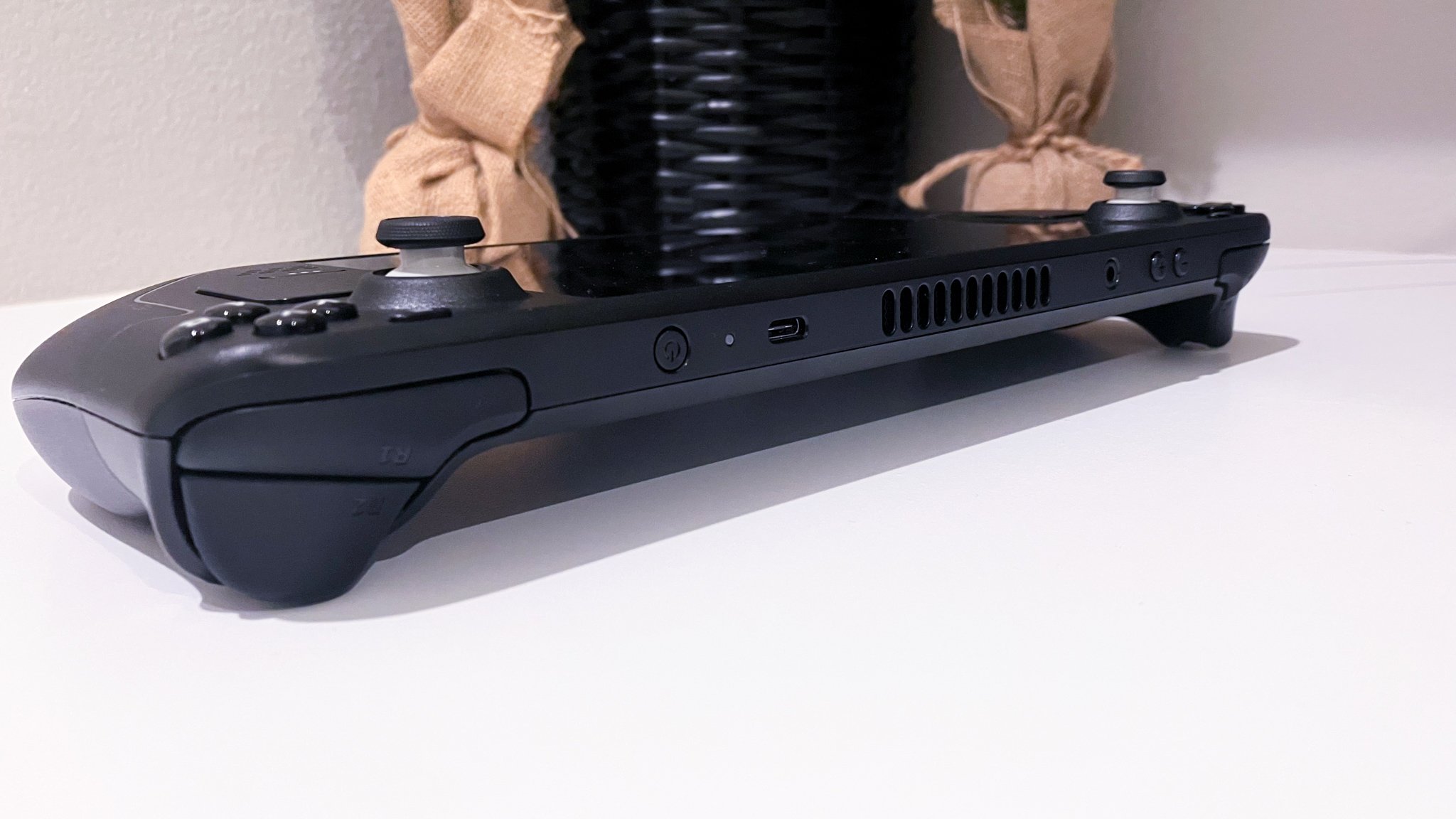
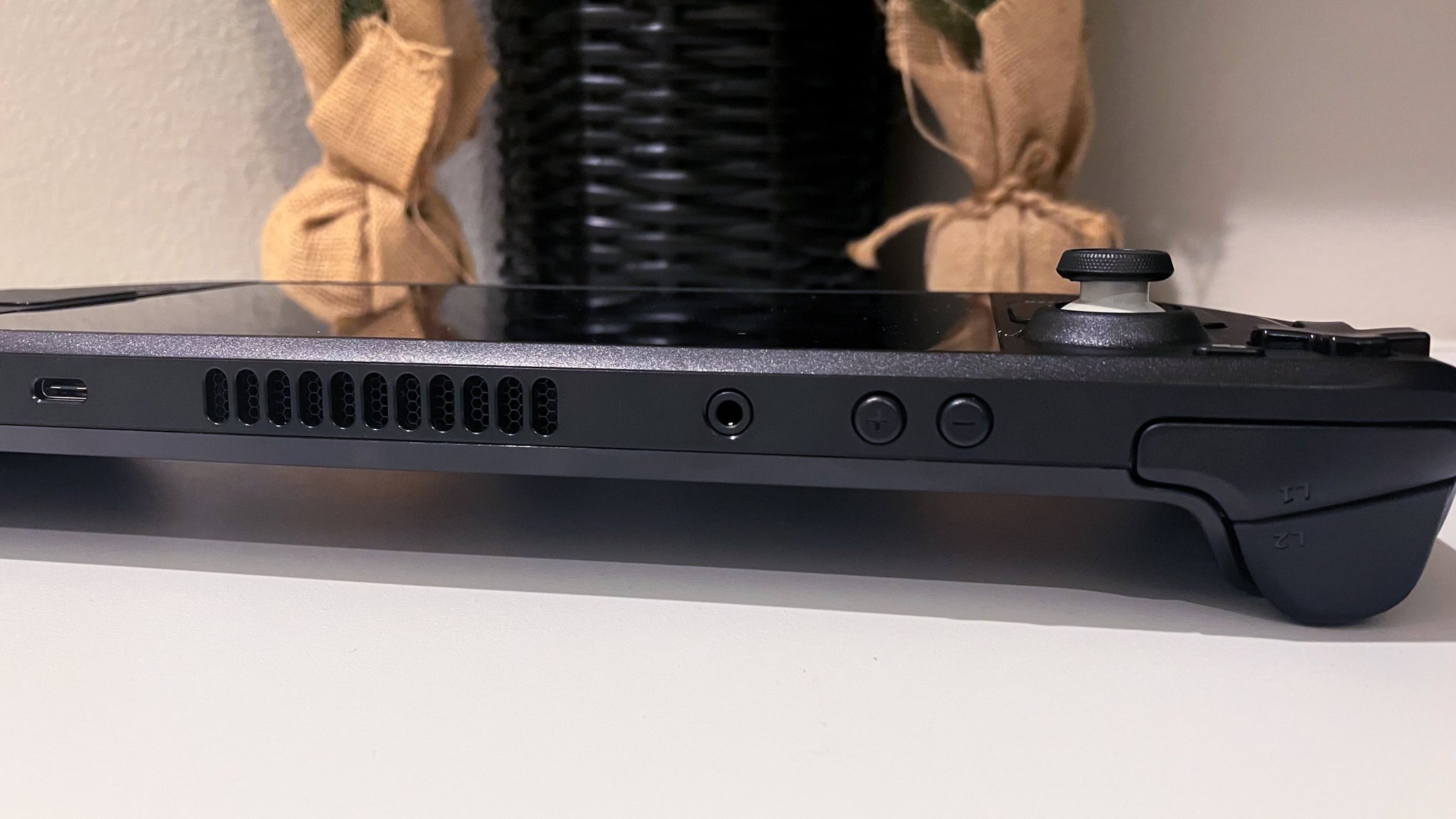

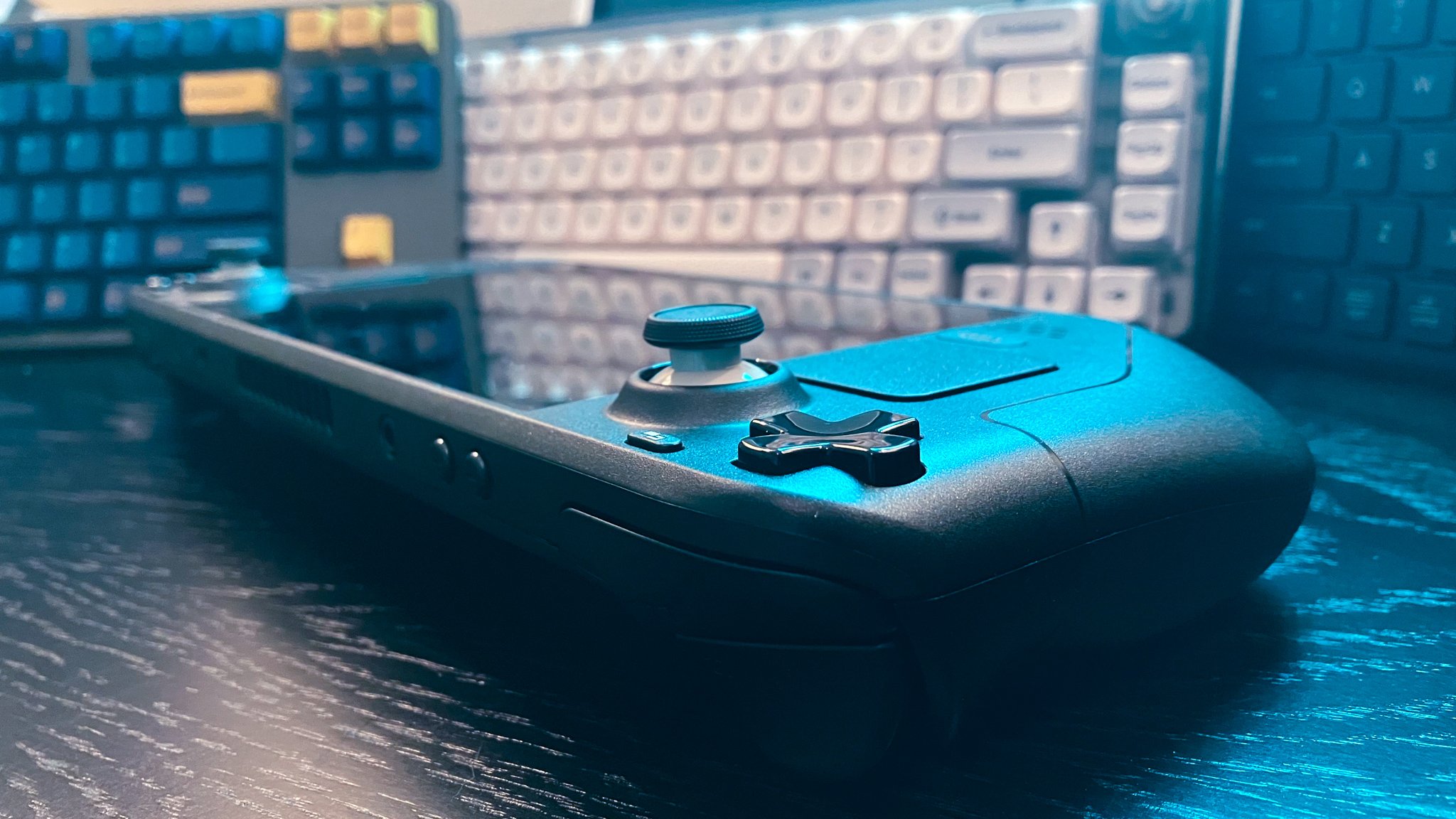

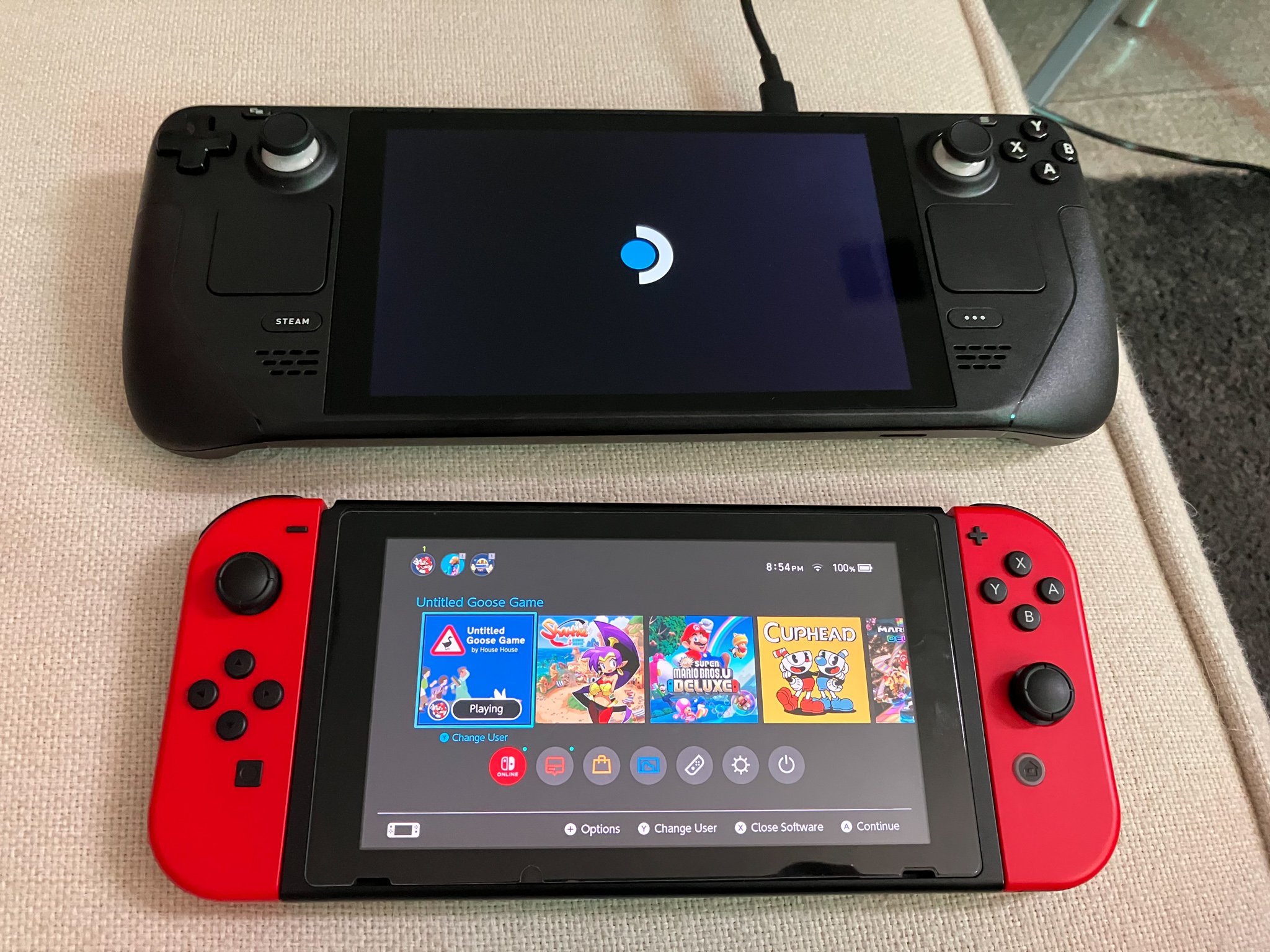
On the frame lies almost all of the physical interactions as the volume rockers are on the top left next to a 3.5 mm headphone jack. An air vent splits the center with a USB-C slot for charging accompanying the power button. L1, L2 and R1, R2 flank each hand grip as controller shoulder triggers. Slightly below them on the rear of the Steam Deck are additional buttons (L4, L5 and R4, R5) that have significantly less travel when pressed than their shoulder trigger counterparts. The exposed micro-SD card slot is located off-center to the right on the bottom frame. Unlike the Switch, there isn't a flap to close the slot off from dust.
Initial Thoughts
I will say that while much bulkier than the Switch, the Steam Deck does feel more naturally submerged into my hands than the Switch. There’s not a lot of curves on the rear of the Joy Cons (it’s basically flat) to provide a solid grip by console controller standards. This grip is a bit closer to a Playstation Dualshock than it is a Joy Con. There are two parallel thumbsticks and trackpads that (for me) is quite impressive on a handheld. At first I felt like the thumbsticks were way too high up, but after playing a few games, I was able to accommodate the location without much issue.
However, the D-pad and Y,X,A,B buttons are an eye-sore to someone like me who is a symmetrical OCD freak. The B-button and D-Pad literally are rolling off to the curve of the body. It is so unpleasant to look at. It’s as if someone designing the layout of the controller ran out of real estate to work with and just had to cram it in no matter what. I didn’t even need 5 minutes with the Steam Deck to have the layout drive me crazy. Luckily your thumbs will cover it up 90% of the time, but subjectively, the Steam Deck is not a pretty looking console at all. It is a far cry from a device like the Nvidia Shield (later renamed Portable) which I would love to see another attempt at that form factor with today’s modern technology.
Powering this behemoth is an AMD Zen 2 processor and an AMD RDNA 2 GPU with 16 GB of ram running through tasks. Valve sells three models of the Steam Deck and the one I recommend as a bare minimum is this one we have which is the 256 GB of SSD middle variant. It’s $529 which is a bit higher than the $399 base model, but the 64 GB of eMMC storage that comes with that version will (I presume) significantly impact a difference in experience. Not only that, 64 GB of storage can’t even contain many of the game downloads in my library. You’ll be housing your games on a micro-SD card anyway, having more storage is a must for a gaming console like this.
As for what your eyes will be looking at, the Steam Deck flaunts a 1280 x 800p IPS screen across a 7-inch panel. The refresh rate is locked in at 60 Hz, but for portable gaming detached from your PC, that’s not really a detractor. The 16:10 aspect ratio is pretty standard for gaming and it’s a good sized display for a handheld device.
Running SteamOS on Valve-made hardware ideally should lead to a well oiled overall gaming experience. Valve has attempted to form an internal list of games that function effectively on the Steam Deck. In your Steam library, new icons with Steam compatibility are there to assist gamers to decide whether they should attempt to play the game on the Steam Deck. I’ve tried games in my library with all of the ranges of compatibility and it does seem to be fairly accurate. All of the green games I’ve attempted performed well. The questionable ones seemed to boot and work, but I haven’t put enough time in to locate potential compatibility issues yet. The non-compatible games are interesting as an MMO like Temtem seems to actually work just as well as the Switch port does, but Black Desert Online won’t launch. It’ll be fun to explore the limitations of this console.
More to Come
There’s so much flexibility to explore with the Steam Deck that I’m genuinely excited to spend time with it. If you watched our Nintendo Switch review, I once claimed that my dream as a kid was to play Final Fantasy 7 on a plane. That’s plenty easy to do now with modern technology. However, if I’m being realistic about when it finally happened, it took tech growth until about 2016 in order to play a PS1 AAA title near flawlessly on the go. Now in 2022, we can potentially play current AAA titles untethered from a TV or room. This is just mind boggling and showcases just how far technology has come.

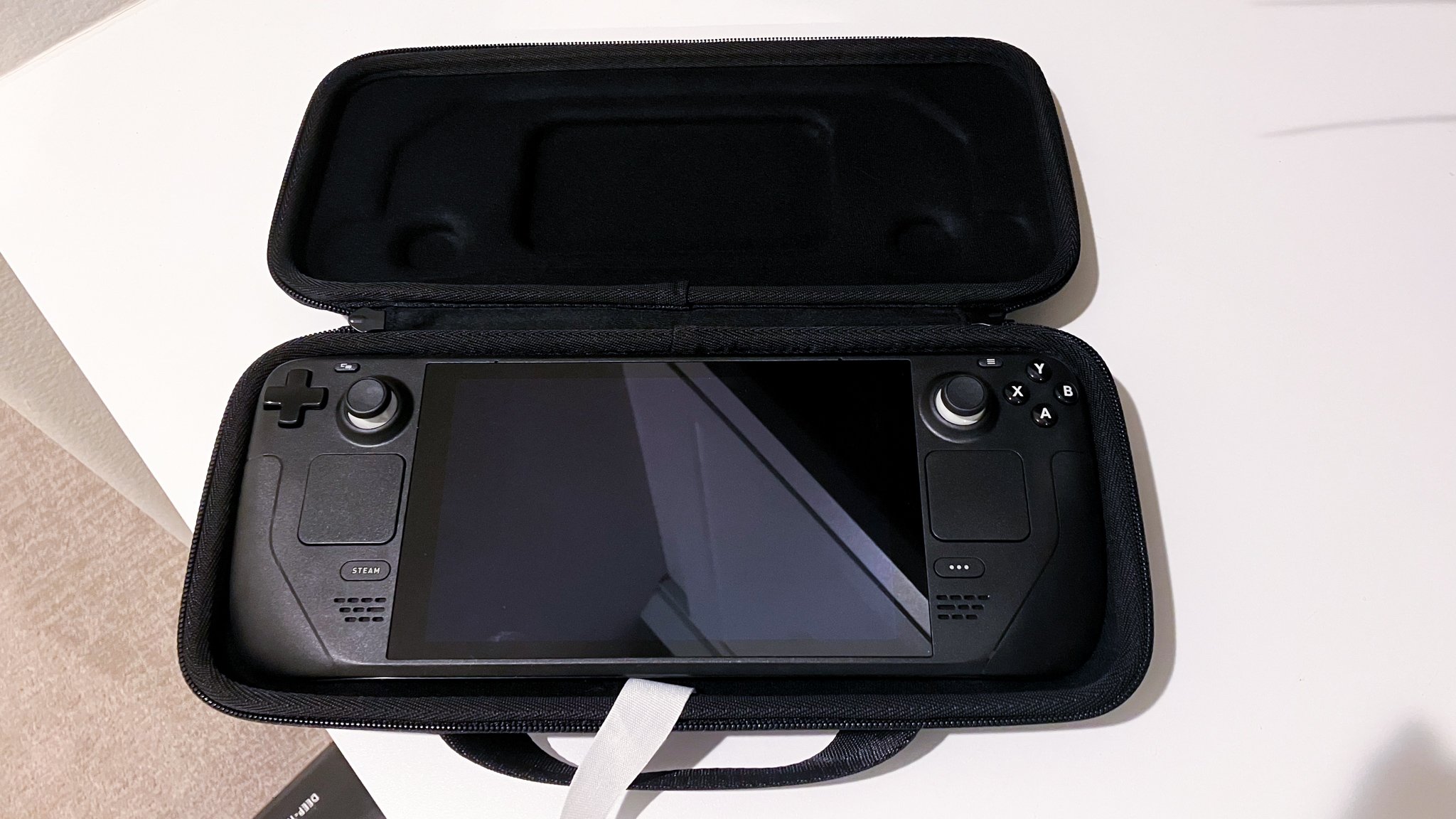

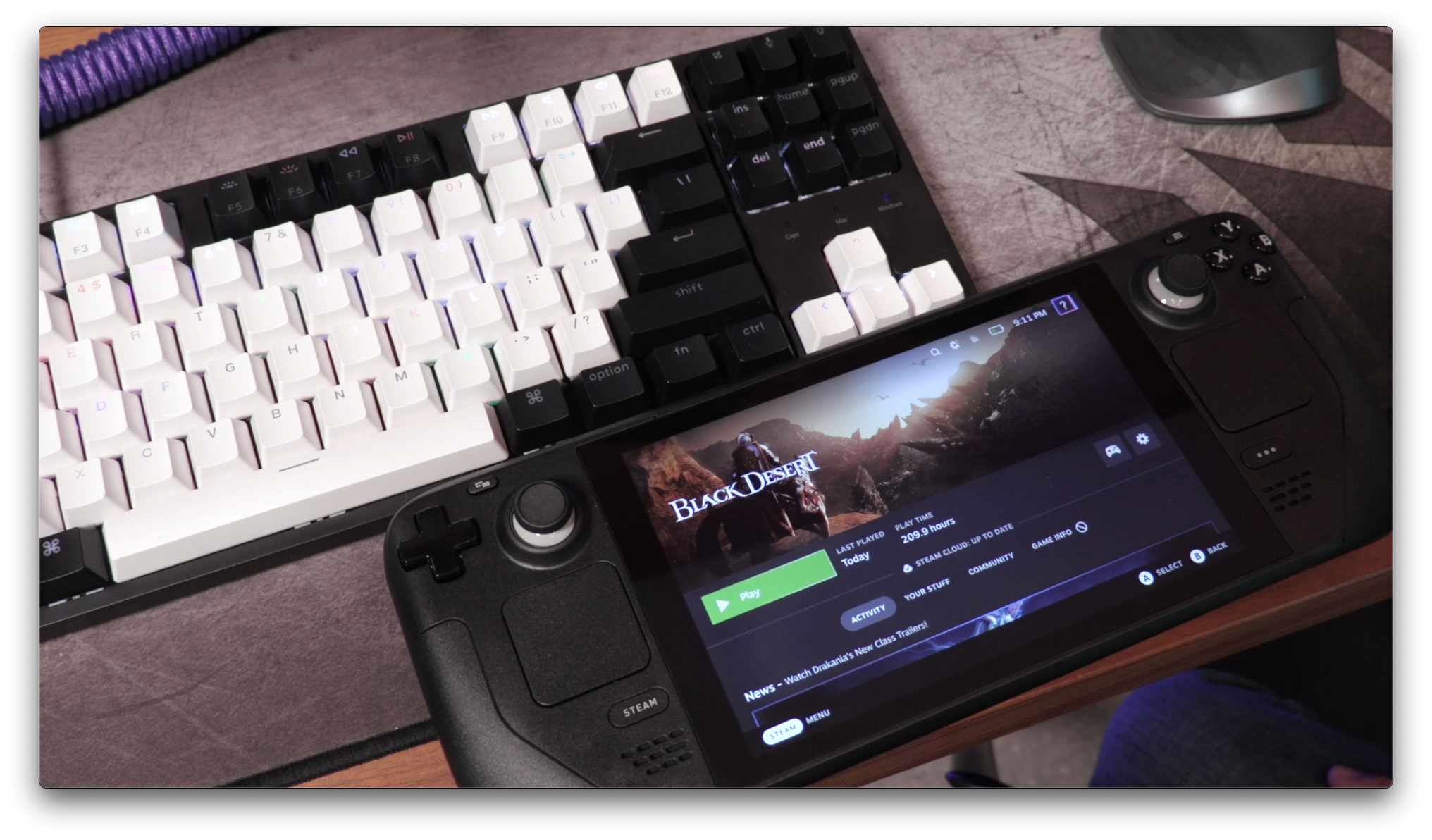









Alex
With nearly a decade under his belt running his video production team, and countless hours traveling the country to report on pop culture events during his tenure as a contributor for AXS Examiner, Alex has relied on a lot of gadgets over the years. That still hasn’t satiated his need to get his hands on the newest and greatest the world has to offer!